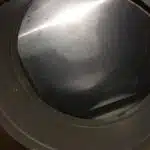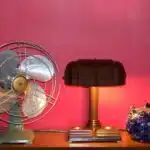Recessed lighting is an excellent way to add ambiance and elegance to any room. Not only does it illuminate a space, but it also creates a visually appealing environment. While installing recessed lighting may seem daunting, with the right tools and techniques, it can be a relatively straightforward process. In this article, we will guide you through the steps necessary for installing recessed lighting in your home or office.
As a lighting installation expert, I have installed numerous recessed lights in various settings. From residential homes to commercial buildings, I understand the importance of proper lighting installation. It not only enhances the aesthetics of a room but also improves functionality by providing adequate illumination for daily activities. By following our comprehensive guide on how to install recessed lighting, you too can achieve this desired effect in your space with ease and confidence. So let’s dive into the world of recessed lighting installation and illuminate your surroundings!
Assessing Your Lighting Needs
Lighting design is an essential factor when it comes to installing recessed lighting. It’s not just about illuminating a room but also creating a mood and ambiance that aligns with the overall interior design scheme. Before embarking on your installation project, it’s crucial to assess your lighting needs and determine the type of recessed lighting that will meet those needs.
One of the primary considerations you should make when assessing your lighting needs is energy efficiency. With energy costs continually rising, choosing energy-efficient fixtures can save you money while also reducing your carbon footprint. LED recessed lights are one of the most energy-efficient options available, consuming less power than traditional bulbs while lasting longer.
Another aspect to consider when assessing your lighting needs is the intended use of the space. For instance, areas where you perform tasks such as cooking or reading require brighter illumination than areas designated for relaxation like bedrooms or living rooms. Additionally, dimmer switches can help regulate brightness levels in different areas of a room, giving you more control over the ambiance.
To choose the right type of recessed lighting that meets your requirements, there are several factors to consider. These include ceiling height, room size, and trim style. Each factor plays a vital role in determining which fixture will provide optimal illumination and complement the room’s decor seamlessly.
Choosing The Right Type Of Recessed Lighting
Transition from Previous Section: Now that you have assessed your lighting needs, it’s time to move on to the next crucial step in your lighting project – choosing the right type of recessed lighting. This is where things can get a bit tricky, but fear not! With the right knowledge and guidance from a lighting installation expert, you can make an informed decision that will elevate your lighting design and enhance energy efficiency.
When it comes to choosing the right type of recessed lighting for your home or office, there are several factors to consider. First and foremost, think about the purpose of the room. Is it a workspace or a relaxation area? The answer will determine whether you need task lighting or ambient lighting. Next, consider the size and height of the room. For higher ceilings, you may need adjustable recessed lights that can be angled towards specific areas. Finally, take into account your personal style preferences and overall color scheme.
To help you make an informed decision about choosing the right type of recessed lighting for your space, here are three key benefits of investing in this type of lighting:
- Increased energy efficiency: Recessed lights use less energy than traditional light fixtures because they don’t emit as much heat.
- Aesthetically pleasing: Recessed lights provide a sleek look that blends seamlessly with any decor style.
- Versatility: With different types of trims and bulb options available, recessed lights can be customized to fit any space and purpose.
With these benefits in mind, it’s clear why so many homeowners choose recessed lighting for their homes. But before you start installing them yourself or hiring someone to do it for you, make sure you gather all necessary tools and equipment to ensure a safe and successful installation process.
Gathering The Necessary Tools And Equipment
Before beginning the installation process, it is essential to gather all the necessary tools and equipment. The first step in this process is selecting fixtures that fit into your ceiling. There are different types of recessed lighting fixtures available in the market, such as LED or halogen. Selecting the right fixture for your needs will depend on factors such as cost, energy efficiency, and brightness.
The next step is to ensure that you have all the necessary tools required for installation. Some of these tools include a stud finder, a drill with a hole saw attachment, wire strippers, pliers, and a screwdriver. It is also essential to have safety gear such as gloves and protective eyewear to prevent injuries during the installation process.
Safety precautions must be taken when installing recessed lighting to ensure that there is no risk of electrical shock or fire hazards. Before starting any work on the lighting system, it is crucial to turn off power at the main breaker switch. This will ensure that there are no electrical currents flowing through the wires while you are working on them. Additionally, it is recommended that you use insulated tools during installation to avoid any accidental electrocution. By taking these safety precautions seriously, you can guarantee that your installation process goes smoothly without any risk of injury or damage to property.
Turning Off The Power
After gathering all the necessary tools and equipment, the next crucial step is to turn off the power before installing any recessed lighting. This is essential to prevent electrical accidents or possible electrocution during the installation process. To do this, locate your home’s main electrical panel and turn off the circuit that powers the area where you will be working.
Importance of ensuring that there is no power supply cannot be overstated. Working with live wires can result in severe injuries or even death. Taking safety precautions such as wearing rubber-soled shoes, using insulated tools, and avoiding touching bare wires with your hands can also help to minimize potential hazards.
Once you are confident that there is no power running through your house, you can proceed with measuring and marking up your ceiling for installation. Before starting this process, ensure that you have a plan on where to place each light fixture strategically. A well-thought-out plan will not only provide adequate illumination but also add aesthetic value to your home.
List of 4 items:
- Always use a voltage tester before handling any wires to confirm that there is no power running through them.
- Make sure that you have turned off all switches related to the area where you are installing lights.
- Avoid short circuits by ensuring that each wire connection is secure and free from loose connections.
- Keep children and pets away from the work area during installation for their safety.
Moving on to measuring and marking up your ceiling, it is essential first to determine how many lights you need for adequate illumination in the space. The size of your room should guide how many fixtures you install within it. Once this has been determined, measure out an equal distance between each light fixture location on your ceiling carefully. Ensure that these measurements align with any previously drawn plans or sketches.
With these steps in mind, we can proceed confidently into measuring and marking our ceilings for recessed lighting installation without worrying about potential electrical dangers.
Measuring And Marking Your Ceiling
Accurate measurements of the ceiling are a key component in the installation of recessed lighting. Once measurements are taken, the ceiling must be marked to indicate where the fixtures will be placed. This can be done using a level and a pencil, or by using a laser level to project a line onto the ceiling. It is important to ensure that marks are precise and consistent in order to ensure that the recessed lighting is installed correctly.
Measuring The Ceiling
To properly install recessed lighting, it is crucial to measure the ceiling accurately. The first step is to determine the ceiling height, as this will determine the length of the housing required for your lights. This measurement can be taken using a measuring tape or laser measurement tool. It’s important to measure at several points across the room, as ceilings are not always perfectly level.
Next, take note of any obstacles or obstructions in your ceiling that may affect the installation process. This includes things like ductwork, plumbing pipes, or HVAC systems that could interfere with wiring or prevent you from installing lights in certain areas. Be sure to mark these locations on your ceiling plan so that you can avoid them during installation.
Finally, when measuring and marking your ceiling for recessed lighting installation, it’s essential to follow local building codes and safety regulations. These guidelines may dictate spacing requirements between lights, maximum wattage allowances, and other important factors that must be considered during installation. By taking these precautions into account and carefully measuring your ceiling before beginning the installation process, you can ensure a safe and successful outcome for your project.
Marking The Ceiling
To ensure a successful installation of recessed lighting, measuring and marking the ceiling accurately is crucial. Once you have determined the ceiling height and noted any obstacles or obstructions, it’s time to mark the ceiling for installation. Ceiling marking techniques include measuring and drawing out where each light will be placed, ensuring proper spacing between lights, and marking the location of any necessary electrical connections.
When marking the ceiling, it’s important to find the right location for lighting to achieve your desired aesthetic and functionality. This involves considering factors such as room layout, furniture placement, and natural lighting sources. By strategically placing your recessed lights in areas that complement the space, you can create a comfortable atmosphere that enhances your overall design.
As an expert in lighting installation, I would advise homeowners to take their time when marking their ceilings for recessed lighting. Double-check all measurements before making any cuts or drilling holes and always follow safety guidelines when handling electrical components. By doing so, you can ensure a safe and efficient installation process that results in a well-lit space that meets all of your needs.
Cutting The Holes For The Lights
Cutting the holes for the lights can be a daunting task, but with proper insulation and safety precautions in place, it can be accomplished with ease. Before beginning, it is important to ensure that the location of the hole aligns with where you want your light to shine. Using a pencil, mark the center of where you want your light to be.
Next, use a hole saw or drywall saw to cut out the desired size hole. If using a hole saw, make sure it is the same size as your recessed light fixture. Be cautious not to apply too much pressure when cutting into the ceiling or wall as this could cause damage or injury.
Proper insulation should also be taken into consideration before cutting any holes. Make sure to check for any electrical wires or plumbing that may be behind the area being cut. Safety precautions such as wearing protective gear and turning off power sources should also be taken before beginning any work.
Now that we have covered how to properly cut holes for recessed lighting, let’s move on to running electrical wiring for these fixtures.
Running Electrical Wiring
After cutting the holes for the lights, it’s time to run electrical wiring. However, before doing so, it’s important to take safety precautions. Turn off the power supply to the room where you’ll be working and use a voltage tester to make sure there’s no electricity flowing through the wires.
Once you’ve ensured that it’s safe to proceed, you can begin running electrical wiring. This involves connecting individual light fixtures together in a daisy chain pattern and then connecting them all to a single switch. To do this, first connect the black wires from each fixture together with wire connectors. Then connect the white wires together in the same way. Finally, connect all of the ground wires together.
If you’re not comfortable with running electrical wiring or if you’re unsure about any aspect of recessed lighting installation, don’t hesitate to hire an electrician. A professional electrician will have the expertise and experience necessary to complete your project safely and efficiently. Plus, they can help ensure that your lighting is installed correctly and up to code.
Transitioning into attaching the housing: With your wiring complete, it’s now time to move on to attaching the housing for your recessed lighting fixtures.
Attaching The Housing
Once you have determined the appropriate location for your recessed lighting, it is time to attach the housing. The housing refers to the metal frame that holds the light bulb and trim in place. To attach the housing, begin by positioning it within the hole you have cut in the ceiling. Ensure that it is level and flush with the ceiling surface before proceeding.
Next, secure the housing into place using adjustable mounting brackets or clips. These should be included with your lighting kit and are typically designed to fit onto standard ceiling joists. Once secured, ensure that there is no movement or wobbling of the housing. If necessary, adjust or tighten the brackets until it is firmly in place.
Before proceeding to connect any wiring, it is important to consider insulation compatibility. Make sure that your chosen recessed lighting product can be used safely with any insulation present in your ceiling space. Many modern products are designed to be compatible with a variety of insulation types, but it is always best to double-check before proceeding further.
| Pros | Cons |
|---|---|
| Provides a sleek and modern look | Can be expensive |
| Saves space compared to other lighting options | Limited adjustability once installed |
| Energy-efficient and long-lasting bulbs available | Requires cutting holes in ceiling |
Having attached the housing securely and confirmed insulation compatibility, you are now ready to proceed with connecting your wiring. This step will involve connecting wires from your power source (typically located near your light switch) to those on your recessed light fixture. This connection should be made according to manufacturer instructions and local electrical codes. Once complete, you may proceed with installing trim pieces onto your new recessed lighting fixtures.
Connecting The Wiring
- Identifying the live wires is an essential step of the recessed lighting installation process, as it ensures the wiring is correctly connected and the power to the fixture is safely supplied.
- It is critical to ensure the circuit is turned off at the breaker before proceeding with the wiring process.
- For a proper installation, wiring should be run through a junction box, which provides strain relief, protection from physical damage, and prevents the connection from coming loose over time.
- The junction box should be securely fastened to the building structure and wired in compliance with local electrical codes.
Identify Live Wires
To ensure safety during the installation of recessed lighting, it is crucial to identify live wires. This process involves identifying wire colors and using a voltage detector to check for any electrical current flowing through the wires. As a lighting installation expert, I highly recommend this step before proceeding with any wiring connections.
Identifying wire colors is the first step in identifying live wires. Typically, black or red wires indicate hot or live wires, while white or gray wires indicate neutral wires. Green or bare copper wires are ground wires. However, it is essential to note that not all electrical systems follow this standard color code. Therefore, it is crucial to confirm with a voltage detector before proceeding with any wiring connections.
Using a voltage detector is necessary in verifying whether there is any electrical current flowing through the identified wires before making any connections. This tool can detect AC voltage and typically emits an audible beep or visual signal when detecting an electrical current. As part of my commitment as a lighting installation expert, I strongly advise using this tool as it ensures that you avoid potential hazards associated with live electrical currents during the installation process.
Run Wires Through J-Box
After identifying live wires, the next step in connecting the wiring for recessed lighting installation is to run wires through a J-box. J-box placement and wire routing are crucial components of this process. It is essential to place the J-box strategically to ensure that the wiring is secure and protected. Moreover, proper wire routing ensures that the wires are not exposed or tangled, which can pose hazards during the installation process.
When placing the J-box, it is crucial to follow specific guidelines. First, you should ensure that it is accessible and easy to reach in case of future repairs or maintenance. Secondly, it should be placed close to where the recessed fixture will be installed. This placement ensures that there will be minimal wire exposure from the J-box to where the fixture will be mounted.
After placing the J-box, you can begin routing wires through it. The first step involves threading a cable through a knockout hole on the side of the box using pliers. Afterward, strip off about 6 inches of insulation from each wire within the cable and connect them accordingly- black or red cables connected to hot wires, white or gray cables connected to neutral wires, and green or bare copper cables connected as ground wires. Routing wires through a J-box may seem like a simple task but doing so correctly ensures that your recessed lighting installation is safe and functional for years to come.
Installing The Trim
Once you have installed the recessed lighting housing, the next step is to install the trim. The trim is the visible part of the light fixture that sits flush with the ceiling. There are many different trim options available, including baffles, reflectors, and open trims.
Baffles are popular because they help reduce glare and direct light downward. Reflectors are ideal for spaces where a lot of light is needed, such as kitchens or workspaces. Open trims provide a clean and simple look that works well in any room.
When installing the trim, it’s important to follow some basic installation tips. First, make sure you choose the right size trim for your housing unit. Next, remove any packaging or protective covering from the trim before installation. Then, gently push the trim up into place until it clicks into position.
In order to ensure your recessed lighting is working correctly, testing the lights is an important step in the process. By following these installation tips and choosing the right trim option for your space, you can create a beautiful and functional lighting design in any room of your home or office.
Testing The Lights
Now that you have installed your recessed lighting, it’s time to test your work. This is an essential step in ensuring that everything is working correctly and that you won’t encounter any issues down the line. Testing procedures may vary depending on the type of lighting you have installed, but there are some standard troubleshooting techniques to follow.
Firstly, turn on the power switch and check if all lights are turning on. If not, double-check the wiring connections to ensure they are correctly placed. Secondly, test the dimmer switch by adjusting its brightness levels to check if it’s working correctly. Thirdly, check for any flickering or buzzing sounds coming from the lights as this may indicate loose connections or a problem with the fixture.
If you encounter any issues during testing, don’t worry; there are troubleshooting techniques available to help you resolve them. Firstly, check all electrical connections and make sure they are tightly connected. Secondly, inspect the bulbs and see if they need replacement or tightening. Lastly, refer to your installation manual for further guidance or contact a professional electrician if needed.
Now that you have tested your newly installed recessed lighting and resolved any issues arising during testing procedures using our troubleshooting techniques; it’s time for making adjustments to perfect your lighting setup.
Making Adjustments
- Adjusting the brightness of recessed lighting fixtures is a simple process that requires a few tools and some basic electrical knowledge.
- Once the fixture is mounted in the desired location, the brightness of the light can be adjusted with the use of a dimmer switch or a trim ring.
- Aligning recessed lighting fixtures is a process that requires careful attention to ensure that the fixtures are installed in a straight line to create the desired lighting effect.
- This process typically involves measuring the distance between the fixtures, as well as making any necessary adjustments for proper alignment.
Adjusting Brightness
When it comes to recessed lighting, adjusting brightness is a key aspect that can significantly enhance the ambiance of your room. One of the most effective ways to control brightness is by using dimmer switches. These devices allow you to adjust the light output from your recessed lights, providing you with greater flexibility in creating the perfect lighting environment for any occasion.
When selecting dimmer switches for your recessed lighting installation, it’s important to consider color temperature. Color temperature refers to the color of light emitted by your fixtures, and it can have a significant impact on how your space looks and feels. For example, warm white light (around 2700K) can create a cozy and inviting atmosphere, while cool white light (around 4000K) is ideal for task lighting in areas such as kitchens or bathrooms.
Once you’ve installed dimmer switches and selected the appropriate color temperature for your recessed lights, it’s time to start experimenting with brightness levels. Start by setting your dimmer switch at around 50% brightness and adjust up or down as needed until you achieve the desired level of illumination. Remember that different activities may require different levels of brightness; for example, reading may require brighter light than watching TV or relaxing with friends. With some experimentation and careful consideration of your needs, you’ll be able to find the perfect balance between functionality and ambiance for your space.
Aligning Fixtures
As a lighting installation expert, making adjustments to your recessed lighting system is essential in creating the perfect ambiance for any space. One aspect that should not be overlooked is aligning fixtures. Proper fixture spacing and leveling techniques can significantly impact the overall look and feel of your room.
When it comes to fixture spacing, it’s important to consider both functional and aesthetic aspects. For example, in areas where task lighting is required, such as kitchens or home offices, closer fixture spacing may be necessary to ensure adequate illumination. On the other hand, in areas where the focus is on creating a cozy atmosphere, wider fixture spacing may be more suitable. Additionally, ensuring that all fixtures are properly aligned and leveled can prevent uneven light distribution and create a more polished look.
Incorporating these alignment techniques into your recessed lighting installation can take some time and effort but will ultimately result in a more functional and aesthetically pleasing space. Whether you’re aiming for task lighting or ambient illumination, proper fixture spacing and leveling will help you achieve your desired lighting goals.
Finishing Touches
After successfully installing your recessed lighting, it’s important to consider some finishing touches that can greatly enhance the overall look and feel of your space. One important factor to keep in mind is color temperature. This refers to the warmth or coolness of the light emitted by your bulbs. Choosing a color temperature that complements the mood and function of your room is crucial for optimal lighting design.
Another important consideration is dimmer compatibility. Installing a dimmer switch allows you to adjust the brightness of your recessed lighting, giving you greater control over the ambiance of your space. However, not all LED bulbs are compatible with dimmers, so be sure to choose bulbs specifically designed for this purpose.
By paying attention to these key finishing touches, you can ensure that your new recessed lighting system not only looks great but also functions optimally for your needs. Remember to choose bulbs with appropriate color temperatures and check for dimmer compatibility before making final purchases.
As with any electrical installation, it’s important to prioritize maintenance and care. Regularly cleaning dust and debris from around your fixtures can help prevent overheating and prolong their lifespan. Additionally, replacing burned-out bulbs promptly can help prevent damage to other components in the system. By staying vigilant about proper maintenance, you can enjoy optimal performance from your recessed lighting for years to come.
Maintenance And Care
The first step in maintaining recessed lighting fixtures is to clean them. This should be done regularly to maintain a high level of illumination and reduce dust accumulation. Replacing bulbs should also be done on a regular basis to ensure that the lighting is at its maximum brightness. Regular inspections should also be done to check for any faults in the fixtures and their wiring. If any problems are found, they should be addressed immediately to prevent any further damage. Additionally, it is important to use the appropriate bulbs and avoid overloading the fixtures. Lastly, it is important to follow the manufacturer’s instructions when installing and maintaining the fixtures.
Cleaning Fixtures
In order to ensure that your recessed lighting fixtures continue to function optimally, it is important to incorporate regular cleaning and maintenance into your routine. Cleaning techniques will vary depending on the type of fixture, but generally involve removing any debris or dust that has accumulated inside the housing or around the bulb. This can be accomplished with a soft cloth or vacuum cleaner attachment.
Preventative measures can also be taken to minimize the need for frequent cleaning. For example, using LED bulbs instead of traditional incandescent bulbs can reduce the amount of heat generated and therefore decrease the buildup of dust and debris. Additionally, installing a trim or baffle around the fixture can help prevent dust from entering in the first place.
It is important to note that certain types of recessed lighting fixtures may require more specialized cleaning techniques or professional maintenance. If you are unsure about how best to care for your specific fixtures, consult with a lighting installation expert who can provide guidance and recommendations based on your individual needs. By incorporating regular cleaning and preventative measures into your routine, you can help extend the lifespan and improve the performance of your recessed lighting fixtures.
Replacing Bulbs
As a lighting installation expert, it is important to discuss the subtopic of replacing bulbs as part of the maintenance and care of recessed lighting fixtures. One of the most common issues that homeowners encounter with their recessed lighting fixtures is bulb burnout. This can occur due to a variety of factors, including age, voltage fluctuations, or improper installation.
When faced with a burnt-out bulb, it is important to first identify the type of bulb required for your specific fixture. This information can typically be found on the packaging or documentation that accompanied your fixture at the time of installation. Once you have identified the correct replacement bulb, use caution when removing the old bulb and installing the new one to avoid damaging any components or wiring.
Troubleshooting tips for other common issues with recessed lighting fixtures may include checking electrical connections for loose wires, adjusting trims or baffles to ensure proper airflow, and testing dimmer switches for compatibility with LED bulbs. By taking these steps and regularly replacing burnt-out bulbs, you can help ensure that your recessed lighting fixtures continue to function effectively and efficiently for years to come.
Regular Inspections
As a lighting installation expert, it is important to prioritize regular inspections as part of the maintenance and care of recessed lighting fixtures. Regular inspections can help identify any issues or potential problems before they become more serious, potentially saving homeowners time and money in the long run. During inspections, check that all wiring and connections are secure, that trims and baffles are properly adjusted for optimal airflow, and that the fixtures are free from any damage or wear.
In addition to regular inspections, upgrading outdated fixtures can also be an important aspect of maintenance and care. Older fixtures may not be as energy-efficient as newer models, which can lead to higher energy bills over time. Additionally, newer fixtures may offer improved features or capabilities that can benefit homeowners in terms of functionality or aesthetics. When considering upgrading fixtures, be sure to consult with a lighting professional to ensure compatibility with existing wiring and components.
By prioritizing regular inspections and considering upgrades when necessary, homeowners can help ensure that their recessed lighting fixtures continue to function effectively and efficiently for years to come. As with any home maintenance task, it is important to approach these tasks with caution and safety in mind. If you are unsure about how to perform inspections or upgrades yourself, consider consulting with a qualified professional who can provide guidance and assistance as needed.
Troubleshooting Common Issues
After ensuring that your recessed lighting is properly installed and working, regular maintenance and care is necessary to maintain its longevity. One important aspect of this is voltage testing, which should be done periodically to ensure the wiring and power supply are functioning correctly. It is also essential to check for any loose connections or damaged wires that may cause flickering or complete failure of the lights.
Another key component in maintaining recessed lighting is proper light positioning. This involves adjusting the direction of the light fixture to achieve optimal illumination in a room. The position of the light can greatly affect the overall ambiance and functionality of a space. For example, task lighting should be directed towards work areas such as countertops or desks, while accent lighting can be used to highlight artwork or architectural features.
If you encounter any issues with your recessed lighting despite proper maintenance, there are several common troubleshooting solutions that can be attempted before calling a professional electrician. These include checking for blown fuses or tripped circuit breakers, replacing faulty bulbs, and tightening loose screws on the fixture itself. By following these steps, you can save time and money while ensuring that your recessed lighting continues to enhance your home’s aesthetic and functionality for years to come.
Conclusion
Recessed lighting is a popular choice for many homeowners who want to add a touch of elegance and sophistication to their homes. As an expert in lighting installation, it is important to emphasize the importance of assessing your lighting needs before embarking on any installation project. Choosing the right type of recessed lighting can also make a significant difference in the overall aesthetic appeal and functionality of your space.
It is worth noting that according to recent statistics, the global market for LED lighting is expected to grow at a CAGR of 13.4% from 2020 to 2025, indicating an increasing trend towards energy-efficient and cost-effective lighting solutions. As such, incorporating recessed LED lighting can not only enhance the visual appeal of your space but also help save on energy costs.
Proper installation techniques are crucial for achieving optimal results when installing recessed lighting. By following the outlined steps carefully, gathering necessary tools and equipment, assessing your ceiling for measurements and making adjustments where needed, you can ensure long-lasting performance from your recessed lights. With proper maintenance and care, you can enjoy consistent light quality without any issues or malfunctions.
Image Credits
- “Recessed Hotel Lighting (#9)” by SammCox (featured)




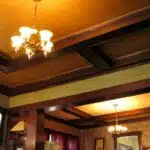




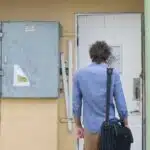
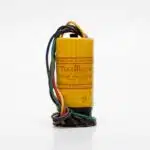
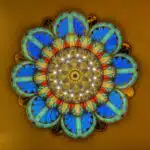
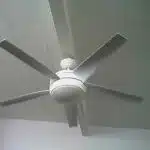

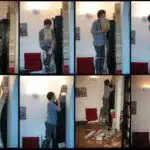
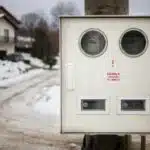

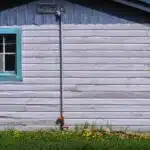



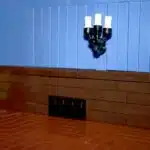



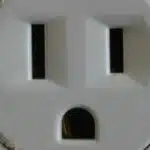

![How To Replace A Single-Pole Wall Switch 27 '... All in all it's just another [switch] in the wall.' ...](https://green-life.blog/wp-content/uploads/2023/05/17xmP5qMtVjq-150x150.jpg.webp)
